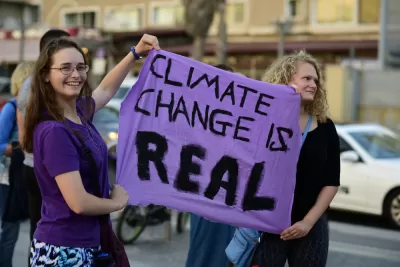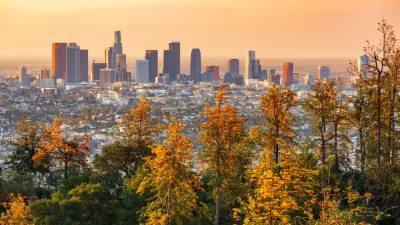If policymakers don't take clear, immediate action, emissions reductions will fall short of the 50-52 percent goal set in Paris.

In an analysis from Rhodium Group, authors John Larsen, Ben King, Emily Wimberger, Hannah Pitt, Hannah Kolus, Alfredo Rivera, Naveen Dasari, Claire Jahns, Kate Larsen, and Whitney Herndon combine their collective expertise "of the US economy, energy systems, and policy design with state-of-the-art modeling tools to comprehensively answer two questions: Can the US cut net GHG emissions by 50-52% by 2030 and if so, what does a policy pathway to the target look like?"
The report finds that "[u]nder current policy as of May 2021, with no new action, the US is on track to reduce GHG emissions 17-25% below 2005 levels in 2030." This "leaves a gap of 1.7-2.3 billion metric tons of emission reductions required to achieve the US target in 2030." The "analysis demonstrates that meeting the US’s 2030 target is achievable, if Congress, the executive branch, and subnational leaders all take a series of practical and feasible policy actions" that include "passage this year of the infrastructure bill and budget reconciliation package in Congress, coupled with a steady stream of standards and regulations by federal agencies and accelerated action by leading states and companies."
The report warns that "[e]ven then, achieving the ambitious goal puts the nation just halfway to the longer-term goal of net-zero emissions by mid-century, which is the level required for the US to play its role in a robust global response to the threat of climate change." The full report, which details "a series of actions that can be reasonably expected to occur over the next nine years if leaders in all levels of government work in earnest to address climate change," can be accessed here.
FULL STORY: Pathways to Paris: A Policy Assessment of the 2030 US Climate Target

Study: Maui’s Plan to Convert Vacation Rentals to Long-Term Housing Could Cause Nearly $1 Billion Economic Loss
The plan would reduce visitor accommodation by 25% resulting in 1,900 jobs lost.

Alabama: Trump Terminates Settlements for Black Communities Harmed By Raw Sewage
Trump deemed the landmark civil rights agreement “illegal DEI and environmental justice policy.”

Why Should We Subsidize Public Transportation?
Many public transit agencies face financial stress due to rising costs, declining fare revenue, and declining subsidies. Transit advocates must provide a strong business case for increasing public transit funding.

Paris Bike Boom Leads to Steep Drop in Air Pollution
The French city’s air quality has improved dramatically in the past 20 years, coinciding with a growth in cycling.

Why Housing Costs More to Build in California Than in Texas
Hard costs like labor and materials combined with ‘soft’ costs such as permitting make building in the San Francisco Bay Area almost three times as costly as in Texas cities.

San Diego County Sees a Rise in Urban Coyotes
San Diego County experiences a rise in urban coyotes, as sightings become prevalent throughout its urban neighbourhoods and surrounding areas.
Urban Design for Planners 1: Software Tools
This six-course series explores essential urban design concepts using open source software and equips planners with the tools they need to participate fully in the urban design process.
Planning for Universal Design
Learn the tools for implementing Universal Design in planning regulations.
Smith Gee Studio
Alamo Area Metropolitan Planning Organization
City of Santa Clarita
Institute for Housing and Urban Development Studies (IHS)
City of Grandview
Harvard GSD Executive Education
Toledo-Lucas County Plan Commissions
Salt Lake City
NYU Wagner Graduate School of Public Service





























